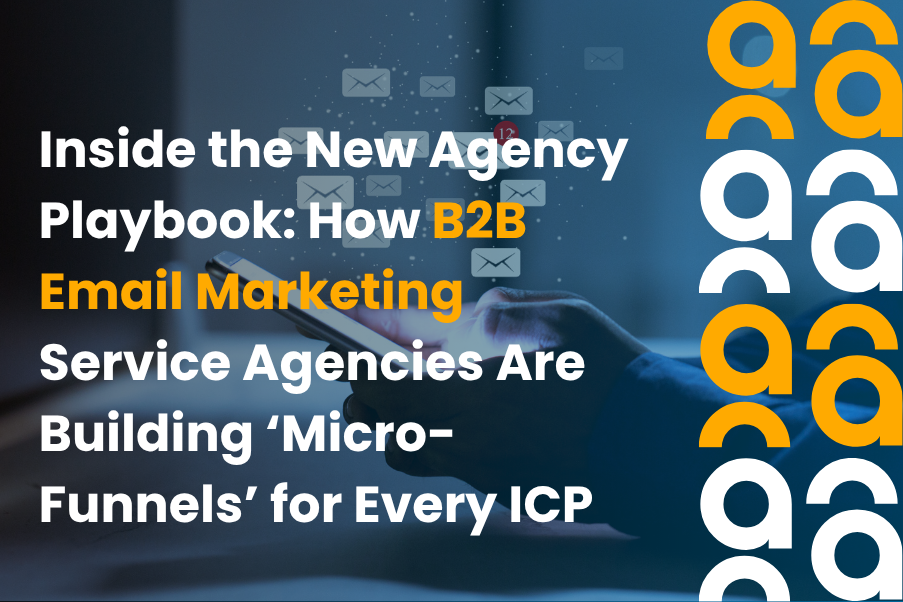Beyond the Script: How High-Performing SDRs Turn Telemarketing Into Consultative Selling

Introduction
Outreach teams often get stuck in the loop of rigid call scripts and quota-chasing. But top-performing SDRs are changing the way outreach operates. They view their role as advisors, not telemarketers. They analyze buyer pain points, ask incisive questions, and deliver meaningful insight. In doing so, they turn telemarketing services into a consultative process that drives trust, progress, and measurable pipeline growth.
In this blog, you will learn how elite SDRs shift the focus of telemarketing services, how they build real conversations, and how your organization can benefit. We’ll explore tone dynamics, question frameworks, real-call examples, and how empathy combined with data creates pipeline-ready outcomes.
The Shift From Transactional Calling To Consultative Selling
Historically, outbound calling equated to volume, scripted intros, and sweeping offers. That model characterizes classic telemarketing companies and the idea of a call center dialing en masse. The role of an SDR is changing. As shown by industry commentary, the modern SDR must act as a consultant: asking questions, listening to needs, and offering insights rather than just pitching.
Here are key differentiators:
- Transactional calls: “Can you spare two minutes? Here’s our product.”
- Consultative calls: “I noticed your team is handling X challenge. How are you currently approaching it?”
- Tone changes: less monologue, more dialogue; more curiosity, fewer assumptions.
Recent stats show that high-performing reps who executed research before each call enjoy conversion uplifts of about 30%.
Across the domain of telemarketing services, the shift is clear: volume plus script gives way to insight-led dialogue.
The Role of Tone, Listening, and Question-Frameworks in Consultative Calls
When SDRs adopt a consultative approach, tone and questions become central. The success of modern telemarketing services depends on how well teams balance curiosity, empathy, and structure during every conversation. Here are practical mechanics for your team.
a. Tone
- Begin naturally: a friendly greeting, reference a real trigger (industry news, job shift, company expansion) to signal depth.
- Use active listening: allow the prospect to speak, validate their concerns, then respond.
- Avoid the “hard sell” cadence; instead, adopt a “help me understand your world” mindset.
b. Question Framework
A robust question framework helps move the conversation beyond surface level. Example sequence:
- Context / current state: “What has changed in your operations this quarter?”
- Pain/challenge: “What obstacle is preventing your team from achieving X goal?”
- Impact: “What happens if that issue persists through the year?”
- Desired state: “How would you define success for that initiative?”
- Role of solution: “What would need to be true for you to consider changing providers?”
c. Real-Call Snippet (Illustration)
SDR: “I saw your company recently moved into the Middle East expansion. How are you managing the acquisition pipeline across regions?”
Prospect: “We’ve got leads in the UAE, but our outreach team struggles with time zone and local insight.”
SDR: “Understood. When you say ‘struggles’, does that refer to connect rates, messaging resonance, or something else?”
In this way, the call moves from a scripted offer to advisor-led exploration.
This approach turns scripted calls into advisor-led dialogues. By applying this framework, SDRs transform traditional telemarketing services and telemarketing campaigns into consultative, data-driven conversations that deliver real value.
Combining Empathy and Data: How Top SDRs Win Conversations
High-performing SDRs combine two dimensions: genuine empathy and smart data. Neither suffices alone; the synergy drives results.
- Empathy shows you understand the prospect’s environment, pressures, and goals.
- Data provides you with credibility and insight. Prospects expect you to come in knowing something about their world or market.
According to a report, 57 % of C-level executives prefer phone contact and appreciate a well-informed outreach. Also, 80 % of sales calls require five or more follow-ups to yield success, underscoring that relationship-building matters.
In practice for your firm offering telemarketing services, this means:
- Use intent or firmographic data to identify prospects whose context aligns with your value proposition.
- Begin calls with something relevant (recent shift, hiring spree, regulatory update).
- Ask questions that show you care about their world, not just your pitch.
- Make suggestions that show you’re advising, not selling.
Tone Dynamics, Real Call Examples, and What to Avoid
Let’s examine practical tone dynamics and contrast good vs poor calls.
What to avoid
- Opening with “Are you free for 30 seconds?”
- Leading with a generic script: “Hello, this is XYZ calling regarding our outsourced telemarketing services…”
- Asking only closed questions.
- Talking more than you’re listening.
What to do
- Begin with context: “I noticed your team in India recently hired five regional BD reps – how has that ramp been for you?”
- Use open-ended discovery: “What changed in your activity since the new reps onboarded?”
- Employ a consult-style pivot: “If you could pick one performance metric you wished would improve most in the next 90 days, what would it be?”
- Link your solution contextually: “Outbound outreach across time zones is often a challenge for companies scaling. We help through targeted, insight-led calling sequences.”
By shifting tone dynamics, you move a call from a transaction to a conversation, positioning your firm well among telemarketing outsourcing companies.
How Our Services Help You Harness Consultative Telemarketing
Outbound calling operates within strict regulations and ethical frameworks. As outreach shifts toward consultative selling, understanding telemarketing laws such as opt-in and opt-out rules, privacy standards, and time-of-day restrictions is essential.
For any company purchasing telemarketing services, ensure your partner:
- Maintains compliant lists (do-not-call, local regulations).
- Records calls where required and documents consent.
- Uses time zones and call windows that respect prospect availability.
- Integrates seamless hand-offs to account executives once qualification is complete.
Compliance builds credibility, protects data, and keeps every conversation transparent and trusted.
Designing High-Impact Outbound Sequences: Turning telemarketing campaigns into Conversations
When planning your outreach, consider the following structure:
- Pre-Call Research – Prepare a short briefing of the prospect’s role, company update, and industry trigger.
- Initial Call – Use the question framework and prioritize listening.
- Follow-Up Email/LinkedIn Touch – Reference the call, add one insight, and propose the next step.
- Second Call – If connected, go deeper: explore budget, timeline, decision process.
- Qualification Call – Confirm fit and send a meeting invite with a clear agenda.
Remember: modern data shows multi-channel sequences outperform single-channel ones by up to 37%. By designing outreach in this way, you improve telemarketing campaigns into relationship-building engines.
Metrics That Matter: How to Track Consultative SDR Success
When moving away from pure script-driven calls, your metrics shift, too. Here are key performance indicators (KPIs) for consultative SDRs operating high-quality telemarketing services.
- Conversation rate (calls reaching decision-maker)
- Discovery questions count per call (top performers ask 11–14 questions)
- Next-step conversion rate (appointment set per conversation)
- Pipeline value per SDR (qualified pipeline generated)
- Time-to-close (speed from meeting to opportunity)
- Compliance and data hygiene (opt-out rate, list accuracy)
Tracking these metrics gives you a clear view of how your outreach is working and how to adjust.
Competitive Insights From Other Firms
Competitor blogs emphasize that script-heavy methods still predominate in many telemarketing outsourcing companies. For instance:
- Generic scripts lead to low connection rates.
- At best practice firms, training emphasizes open-ended discovery questions and personalization.
- Firms that integrate components of consultative selling report higher qualified meetings.
What you can learn:
- Move beyond the “dial list, pitch offer” model.
- Research and personalize before the first connect.
- Use listening and insight, not just talking.
- Integrate multi-touch sequences and data intelligence.
By positioning your firm as consultative and strategic, you stand out not just among telemarketing vendors but as a partner in growth.
Bringing It Together - Your Path Forward
If your organization is evaluating outsourced telemarketing providers or internal SDR programs, ask:
- Are the callers doing homework or reading a script?
- Is the approach one-way broadcasting or two-way discussion?
- Are we tracking meaningful metrics (questions asked, discovery depth) or just dials and talk-time?
- Does the partner understand compliance and respect for the prospect’s time and regulations?
- Can we expect pipeline value, not just talk track?
For organizations seeking expert support in this area, our team at Almoh Media helps with full-funnel telemarketing services: research, messaging, calling, multi-touch sequences, and pipeline delivery.
Take the step to advance your outreach from number-driven dial-and-pray into insight-led consultative dialogue. Let’s talk.
Introduction
If you’re using content syndication, chances are you see it as just another way to get your content in front of more eyes. That’s fine, but there’s a lot more hidden beneath the surface. When you allow its full potential, content syndication ROI can surprise you, and it doesn’t take much to shift perception.
Let’s look at fresh data, outline a winning content syndication strategy, and show how U.S. B2B teams can get real value from it. Let’s begin!
What Is Content Syndication?
At its simplest, content syndication means sharing your B2B content: whitepapers, case studies, blogs on someone else’s site or network. This can be paid or free. You expand your reach, tap into new networks, and generate visibility, often reaching audiences you’d otherwise miss.
Why ROI From Content Syndication Deserves a Second Look
1. Huge lead production for relatively low spend
According to recent studies, the average cost per lead with content syndication is around $43. That’s far lower than other tactics, so even moderate conversion rates can offer solid returns.
2. Fast pipeline growth
Some platforms report that customers see 300–500% return on investment within three years. That’s not fluff – it’s real pipeline growth.
3. Verified conversion tracking methods
With UTM tagging and targeted vendor reports, U.S. marketers can track everything from initial syndication click to closed deal.
4. Built-in trust and positioning
Syndicating through known sites can give you indirect credibility, boosting brand awareness and authority without extra effort.
B2B Content Syndication Strategy: How to Do It Right
A good content syndication strategy starts long before content hits a third-party platform:
a). Pick assets that matter
Whitepapers, case studies, and long-form guides work best. They not only attract interest but also help establish your brand as industry-relevant.
b). Target lead quality, not rush volume
Instead of chasing clicks, target professionals. For example, top B2B firms average a 5.31% conversion rate on syndication offers.
c). Tag everything with UTM links
Measure traffic, engagement, bounce rates, and conversions back at your URL. This helps with syndication attribution.
d). Track core metrics
- CPL (cost per lead)
- MQL-to-SQL conversion rates
- Revenue per lead (use your average contract value)
e). Use the ROI formula
ROI= Revenue−Spend
Spend
For example, $1,000 spent → 50 high-quality leads → $5,000 average value = ($250k – $1k)/$1k = 249× ROI.
f). Optimize, rinse, repeat
Check what works by audience, site, and format. Then double down and drop what doesn’t.
Concrete U.S. ROI Stats You Can’t Ignore
| Metric | Statistics/Insight |
| Cost per lead | $43 average CPL |
| Syndication conversion rate | ~5.31% typical |
| Lead-to-deal conversion lift | 45% increase when focus is on quality |
| ROI over 3 years | 300%–500% reported |
| Projected industry growth | From $4.7 B in 2022 to $5.9 B by 2030 |
Content Syndication for Lead Gen: A Step‑by‑Step Plan
1. Define your ideal audience
Use buyer personas: titles, sectors, company size – so your content finds the right hands. This way, a sharper audience focus helps eliminate wasted spend and improves downstream lead quality.
2. Pick content with substance
Original research, how-to guides, competitive whitepapers – these both educate and convert. Plus, assets that solve specific problems tend to drive stronger engagement and more intent-driven leads.
3. Choose partners wisely
Use third-party platforms to reach U.S. B2B audiences. Look for those offering clear lead reporting and media kits. Before moving forward, ask for case studies or past performance metrics to make a more informed decision.
4. Structure campaigns with UTM tags
Make distinct tracking links for each partner and asset. This makes sure it’s easier to attribute leads, identify top performers, and compare ROI across channels.
5. Launch and monitor
Track CPL, CPL-to-SQL, cost per opportunity, pipeline driven, and revenue tied. At the same time, monitor activity in real-time to catch early trends and shift strategy fast if needed.
6. Review and refine monthly
Use metrics to shift spend toward top performers and tweak underperformers. As a result, consistent optimization keeps your syndication efforts aligned with revenue goals, not just vanity metrics.
How to Calculate Content Syndication ROI
- Calculate total spend (vendor fees + internal costs).
- Count total leads.
- Multiply leads by average deal size for potential revenue.
- Apply the ROI formula:
Revenue−Spend
Spend - Compare ROI over time to benchmark your initiatives.
This method is backed by multiple calculators and case studies.
Hidden Content Syndication Benefits
- SEO gains: Backlinks from quality sources can raise domain authority.
- Brand authority: Recognition on respected sites = credibility.
- Extended content life: A blog post can live on for months if syndicated well.
- Nurture acceleration: Leads from syndication are often further along in buying cycles.
Mistakes to Avoid and Fix Fast
Mistake: Only tracking clicks, not deals.
Fix: Tie every lead back to conversions with CRM integration. That way, you get a clearer picture of what’s actually driving revenue, not just traffic.
Mistake: Focusing only on cheap volume.
Fix: Go after quality; MQL-to-SQL rates matter most. Otherwise, your sales team will waste time on leads that won’t convert.
Mistake: Publishing irrelevant content.
Fix: Audit content – ensure tone, relevancy, and depth match syndication partner audiences. In doing so, you increase the chances of your content resonating with the right decision-makers.
Mistake: Not optimizing over time.
Fix: Regular performance review. Cut poor performers, boost winners. Over time, this helps improve ROI and keeps your content syndication strategy focused and results-driven.
Why Lead Quality Beats Volume
Not all leads are created equal. A smaller batch of high-intent leads can drive more revenue than a huge pool of low-interest ones.
Many B2B brands in the USA are shifting toward account- based syndication, where campaigns are matched to specific industries or companies. This helps improve conversion rates, shorten sales cycles, and increase customer lifetime value.
In short, prioritizing lead quality helps improve the long-term content syndication ROI, especially when targeting high-ticket accounts.
How AI Is Shaping the Future of Syndication
AI tools are starting to reshape content syndication strategy by analyzing behavior patterns and automating placements across high-performing channels.
With predictive scoring, marketers can now:
- Match content formats to individual user segments
- Forecast lead readiness using engagement scores
- Automate syndication at scale using content intent data
These innovations are raising the ceiling on what’s possible for B2B content syndication, especially for companies focused on measurable results.
About Almoh Media
Use metrics to shift spend toward top performers and tweak underperformers.
As a result, consistent optimization keeps your syndication efforts aligned with revenue goals, not just vanity metrics.
At Almoh Media, we specialize in high-impact content syndication for lead gen. We help B2B companies in the U.S. grow their pipelines by delivering:
- Verified lead generation from trusted channels
- Industry-specific targeting and campaign setup
- Transparent reporting tied to your sales funnel
- A proven strategy backed by real ROI
We understand the U.S. B2B buyer journey, and our syndication campaigns are built to generate demand, not just clicks.
Final Takeaway
Content syndication is an easy win if done smartly.
Focus on:
- Quality, not just volume
- Clear tracking and attribution
- Lead-to-deal conversions
- Continuous optimization
With $43 CPL, 5+ percent conversion, and long-term returns of 300–500%, most U.S. B2B teams can justify putting more budget behind it.
Ready to Get Real ROI from Content Syndication?
Let Almoh Media help you build a smarter lead-gen machine. We bring strategy, scale, and precision to content syndication – so your campaigns don’t just get seen; they convert. Reach out now to get started.
-
 Beyond the Script: How High-Performing SDRs Turn Telemarketing Into Consultative Selling
Beyond the Script: How High-Performing SDRs Turn Telemarketing Into Consultative Selling -
 Inside the New Agency Playbook: How B2B Email Marketing Service Agencies Are Building ‘Micro-Funnels’ for Every ICP
Inside the New Agency Playbook: How B2B Email Marketing Service Agencies Are Building ‘Micro-Funnels’ for Every ICP -
 The Hidden Benefits of Outsourcing Lead Generation for Media Agencies and Aggregators
The Hidden Benefits of Outsourcing Lead Generation for Media Agencies and Aggregators -
 Why SaaS Lead Generation Companies Are Becoming Data Partners, Not Just Appointment Setters
Why SaaS Lead Generation Companies Are Becoming Data Partners, Not Just Appointment Setters -
 Top Metrics to Measure the Success of B2B Account-Based Marketing Services
Top Metrics to Measure the Success of B2B Account-Based Marketing Services

